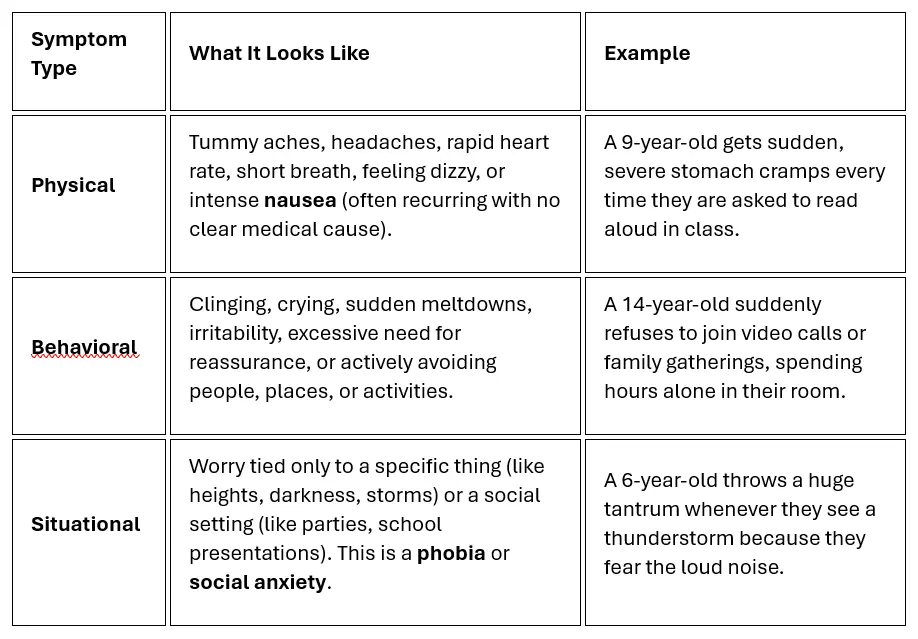Anxiety Disorders
When Worry Hurts: A Parent's Guide to Child Panic, Phobias, and Stomach Anxiety
25 October 2025
6 min read
By Rachana Kulkarni
25 October 2025
6 min read
By Rachana Kulkarni
When Worry Hurts: A Parent's Guide to Child Panic, Phobias, and Stomach Anxiety
The feeling of watching your child panic, freeze with a phobia, or get sick from worry is frightening, but know this: You are not alone, and you can learn to help your child find their brave.
This article gives you clear, practical steps to recognize and respond to panic, social anxiety, phobias, and the intense, worry-fuelled nausea that often comes with them.
What This Article Covers
- Recognizing the subtle and obvious signs of anxiety by age (toddlers to teens).
- Immediate, safe steps to use during a panic or phobia episode.
- Everyday strategies to build your child's coping skills and reduce worry frequency.
- When it's time to seek professional help.
- What assessment and treatment look like.
The Different Ways Anxiety Shows Up

Anxiety in children rarely looks like an adult calmly worrying. It often hides as behavior, physical complaints, or intense avoidance.
Recognizing Signs by Age Group

Immediate Help: During a Panic, Phobia, or Nausea Episode
When your child is overwhelmed, they've lost access to their thinking brain. Your immediate job is to be a calm, reliable presence that guides them back to safety.
Related Articles
Understanding School Refusal: A Guide for Concerned Parents
This guide helps parents understand school refusal as a sign of underlying child anxiety, explaining the biological, environmental, and developmental causes in relatable language. It offers immediate, evidence-based parenting strategies, including distinguishing refusal from normal avoidance and a concrete 2-week graded exposure plan with simple scripts to promote a quick return to school. The post concludes with vital guidance on working with schools, crucial red flags, and essential Indian crisis resources for immediate help.
Anxiety Disorders6 min read
Anxiety Overload: Immediate, Evidence-Based Steps to Take Now
Anxiety Disorders8 min read
The High-Performance Professional's Guide to Anxiety Therapy
Anxiety Disorders4 min read
